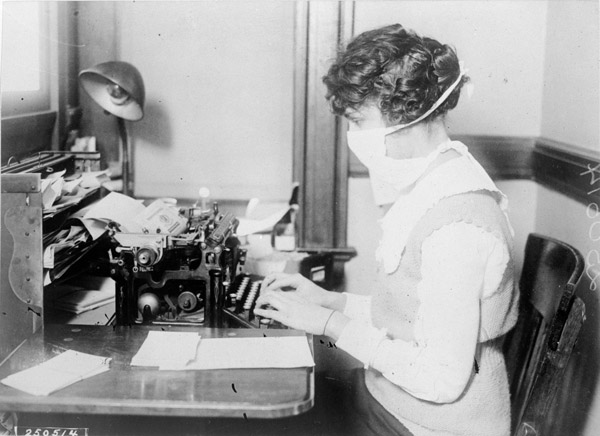This classic photograph shows a New York City typist tending to her duties during the 1918 influenza outbreak. The surgical mask became a ubiquitous accessory on street cars and baseball diamonds, as well as at workplaces, but still 50 million lives were claimed worldwide. From a 2007 historical article by John Galvin in Popular Mechanics:
“Initially called ‘the three day fever,’ it started like any flu, with a cough and a headache, followed by intense chills and a fever that could quickly hit 104 degrees F. It could take a month before survivors felt completely well, and after they emerged from an energy-sapped stupor many said it felt as though they’d been aggressively hit with a club. But for those 650,000 Americans who actually died from the Spanish flu in 1918, the suffering was much worse.
Deep brown spots would appear on a victim’s cheeks and a thick, bloody fluid would begin to overwhelm his lungs. Starting at the ears, their faces would gradually turn blue as circulating blood could not get oxygenated. Soon, victims would start to drown in their own fluid — often coughing up a pinkish froth as they fought to inhale. ‘It is only a matter of a few hours then until death comes, and it is simply a struggle for air until they suffocate,’ an army doctor, based outside of Boston at Camp Devens, wrote to a colleague in 1918. ‘It is horrible.’
The influenza pandemic of 1918 killed an estimated 50 million people around the world — 34 million more than died from the First World War in progress alongside it.”
Tags: John Galvin

